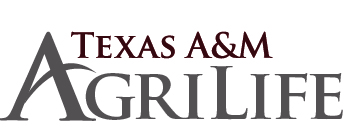12/7/2022
Notes From Texas A&M Conference
Jennifer Polanz

In early December, researchers at Texas A&M hosted the fourth annual conference on Urban Agriculture: Controlled Environment at the Texas A&M AgriLife Research & Extension Center in Dallas. The organizers were kind enough to let me watch virtually to hear the research presented.
I can’t cover all the topics equally—they really jammed a lot of great information into just nine hours—but I did glean some helpful info to pass along (and some ideas for potential future stories).
In one of the shorter presentations, Dr. Joe Masabni, assistant professor and extension small-acreage vegetable specialist, ran down food safety best practices, which can be applied to any operation quickly. His main point is to seriously consider which aspects of the operation can be easily contaminated with pathogens. “Where is the source of contamination? Remember, you are dealing with an enemy you can’t see,” he says.
For hydroponic production, that could be the seeds, media, water, any surfaces and most of all, people. He recommended employing negative vacuum pressure at the entrance to blow air out of the structure vs. allowing it in the greenhouse or vertical farm. Proper handwashing is vital to keeping production clean, and it’s imperative to teach workers proper handwashing technique (here’s a video from the New Mexico Department of Agriculture on it), and to have the right equipment easily accessible to facilitate handwashing.
Other considerations are making sure workers have dedicated footwear at work to wear in growing spaces, as well as hairnets, masks, gloves, smocks and other preventative measures. A final point he made is to make sure workers aren’t coming in to work sick. If they suffering from an illness in any way, they should not be at work.
Another presentation that had practical applications immediately was Dr. Triston Hooks’ discussion on implementing an IPM program in hydroponics production. Dr. Hooks is now at University of Arizona’s CEAC, and noted that climate change will bring about more pests, which could translate into increased pest pressure in the greenhouse and vertical farm environment. His recommendations (condensed for space):
- Plan: created a detailed prevention plan, including scouting methods to minimize pests to acceptable levels (that’s the goal of IPM, not total destruction of pests). Know your crop’s pests and set thresholds for action, then scale it appropriately.
- Prevention: Use screens, doors and other structural methods to prevent pests, and make sanitation a priority for tools and surfaces. Quarantining seedlings and plants prevent pest spread, as does reducing plant litter (pests will complete their lifecycle in organic material or substrate, he says).
- Scouting: Early detection is critical, which means walking the rows and manually turning over leaves. Track evidence and severity—how many plants are affected and how much damage is there. Develop protocols and use maps of the greenhouse to track scouting efforts.
- Identification: It’s just as critical to know how dangerous the threat is, and to make sure you identify whether a pest is a beneficial or foe.
- Control: Once you identify the pest, have a control plan in place. In this order, you can control: culturally, mechanically, biologically or chemically (with chemical as the last resort).
- Assess: Was the control effective? To assess the result, continue scouting and tracking the effort, documenting which efforts were effective and the result.